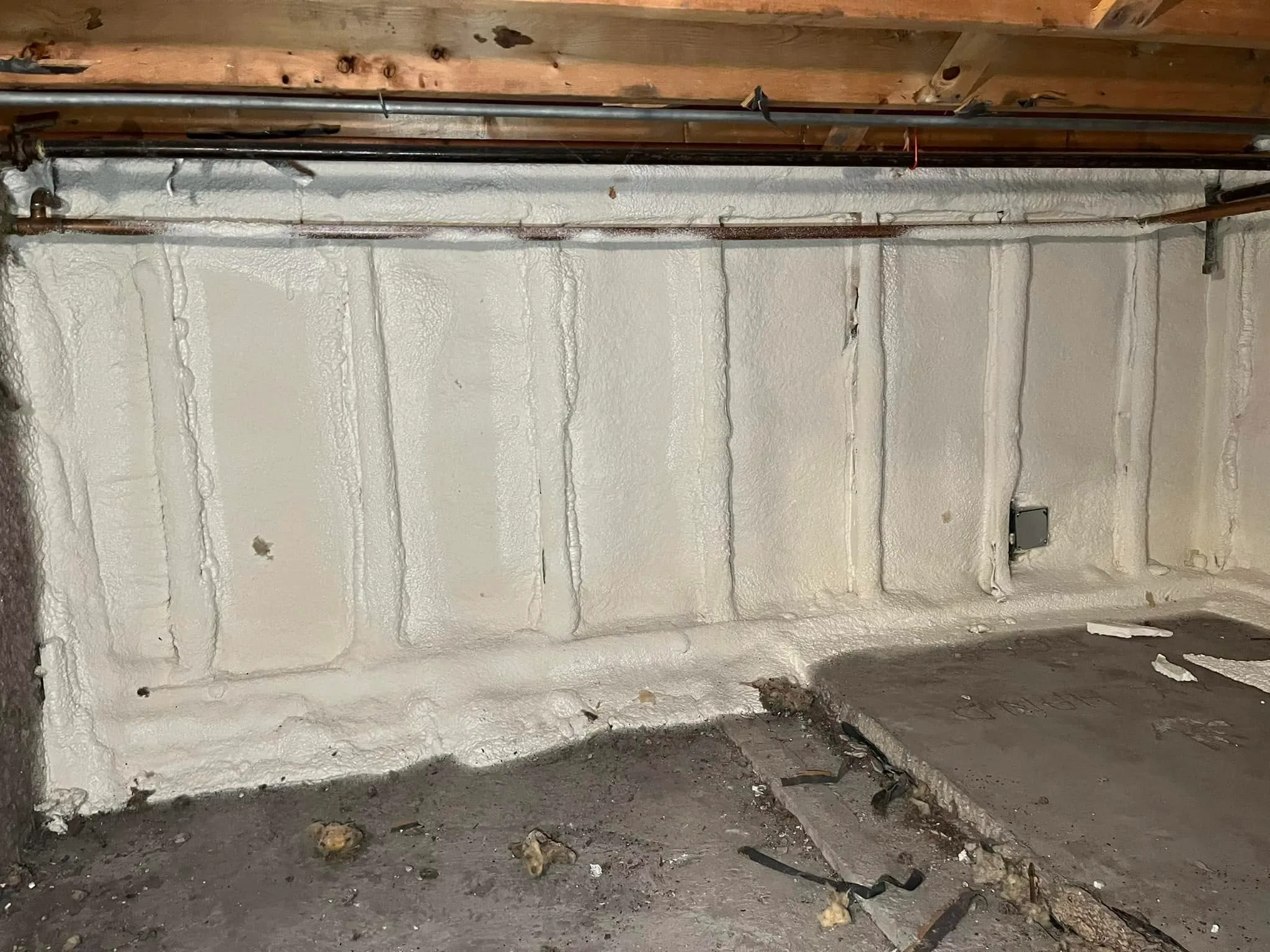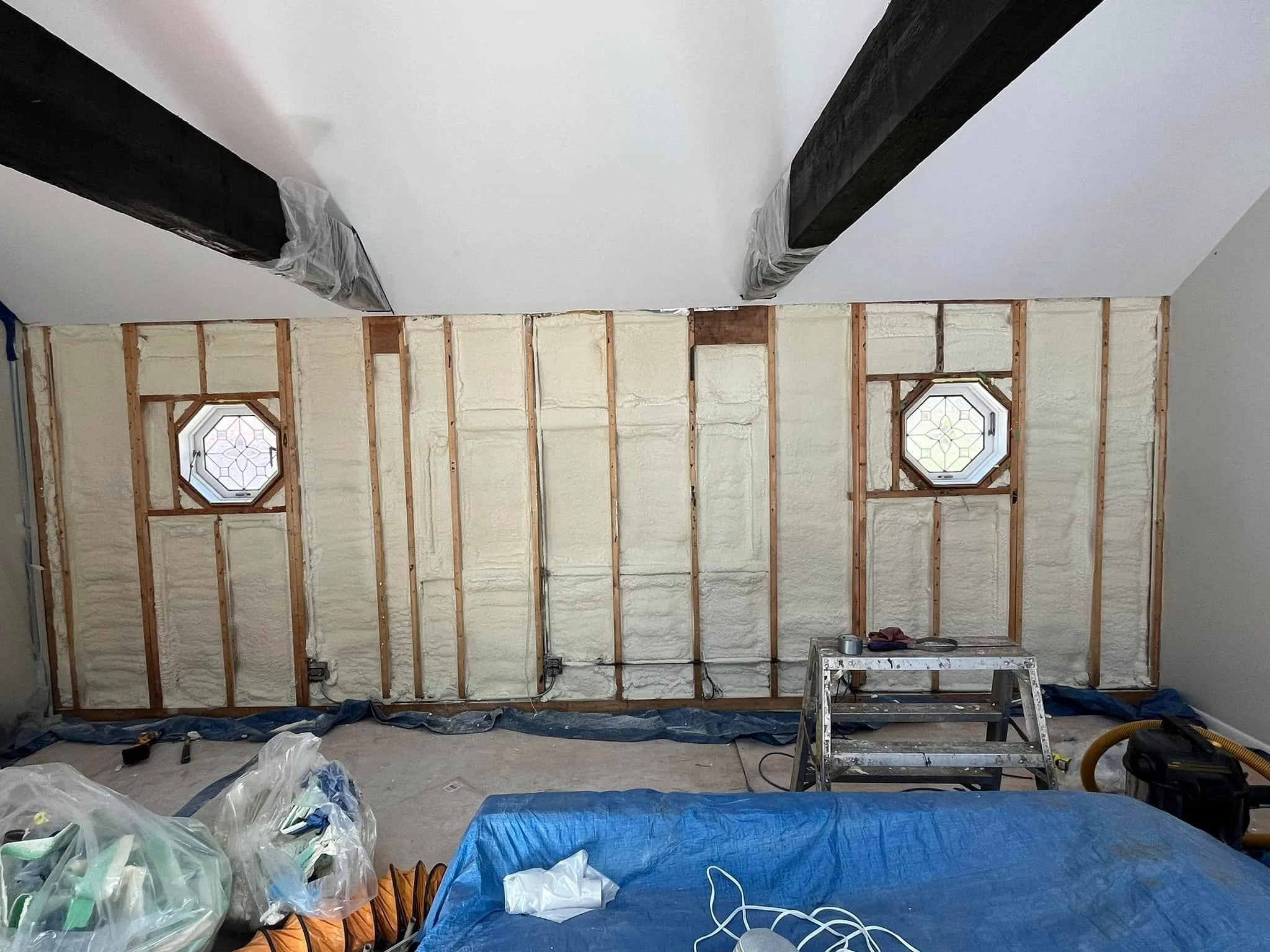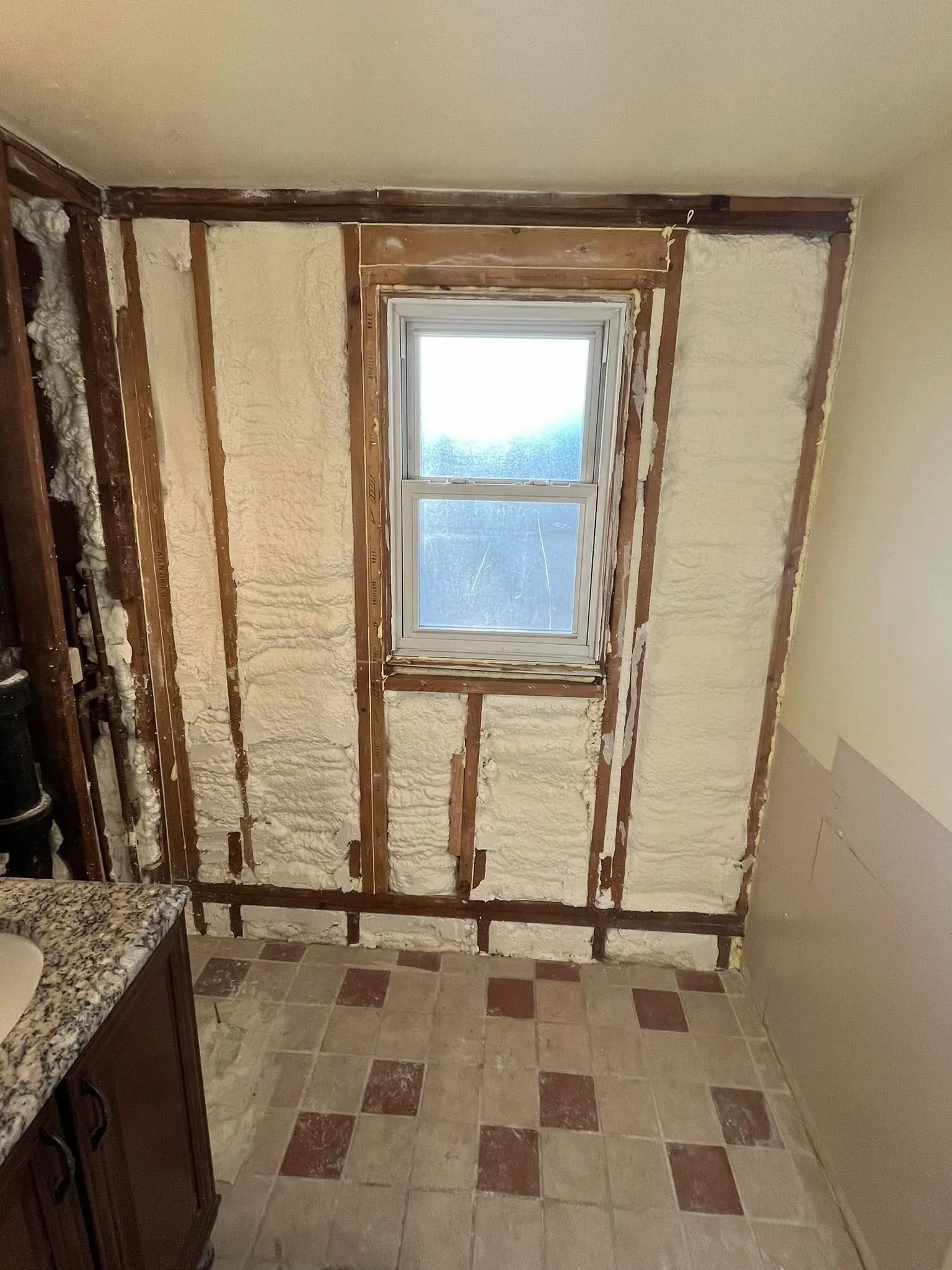
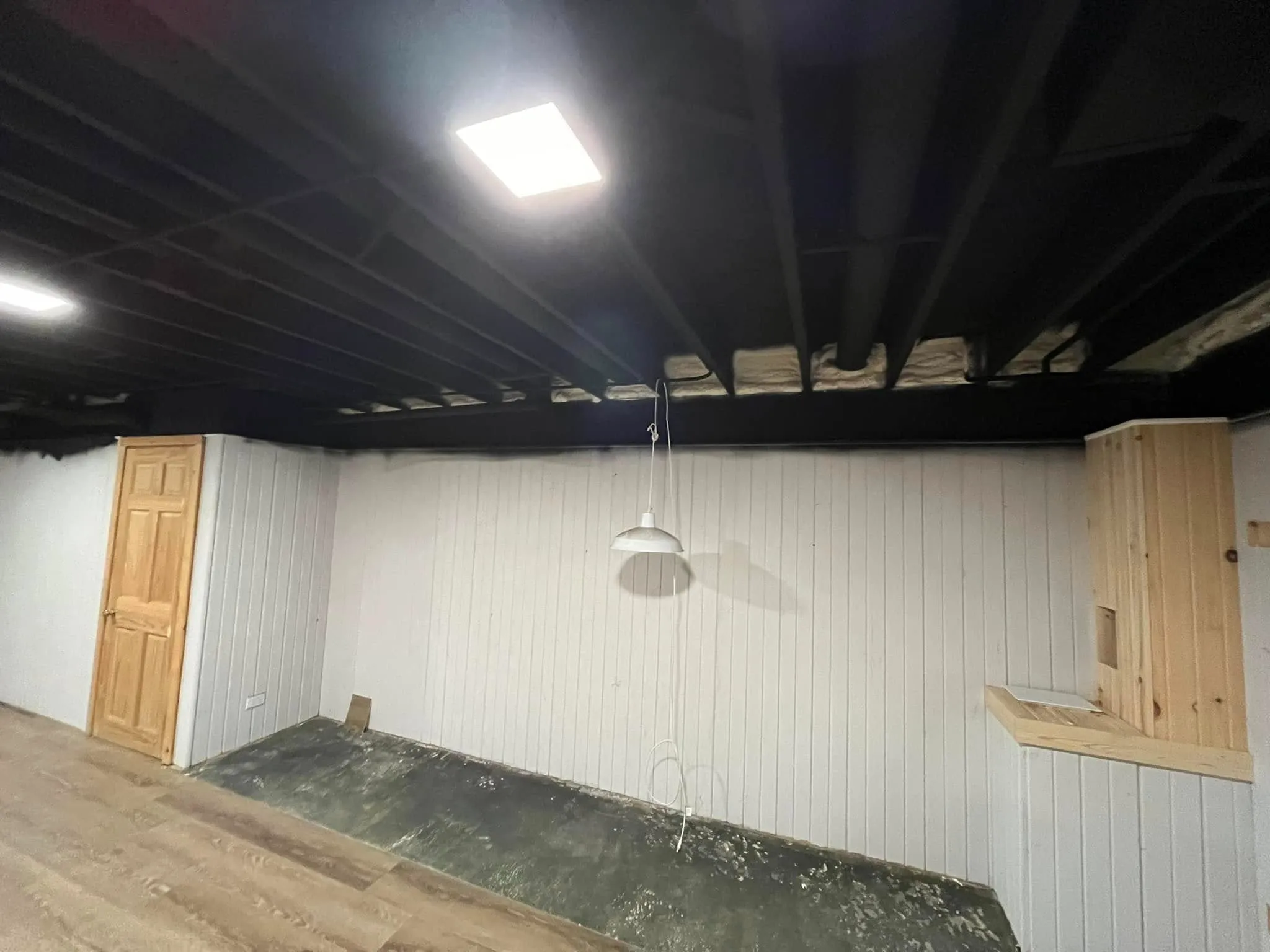
Spray foam insulation emerges as the optimal choice for Chicago commercial buildings due to its superior thermal performance in extreme temperatures, air sealing capabilities, and moisture resistance. The city’s harsh winters with temperatures dropping below -10°F and humid summers create demanding conditions that require insulation systems capable of handling thermal cycling, condensation control, and energy efficiency demands that directly impact operational costs.
Rigid foam board insulation serves as the secondary recommendation for specific applications, particularly exterior wall assemblies and below-grade installations where moisture exposure remains a concern. These two insulation types consistently outperform traditional options in Chicago’s climate zone 5A environment, delivering measurable energy savings and long-term building performance. South Chicago Insulation has observed these performance differentials across hundreds of commercial projects throughout the metropolitan area, providing the practical experience that validates these recommendations.
Chicago’s continental climate demands insulation systems that withstand temperature swings exceeding 100°F annually. Winter heating degree days average 6,500, while summer cooling requirements create additional thermal stress on building envelopes. Commercial buildings face unique challenges including thermal bridging through structural steel, stack effect pressures, and moisture migration patterns that residential applications rarely encounter.
Bonus Tip: Installing continuous insulation on the exterior side of the structural frame eliminates up to 80% of thermal bridging in steel-framed commercial buildings, a critical factor often overlooked in retrofit projects.
The building envelope must maintain consistent thermal barriers while accommodating structural movement, HVAC penetrations, and occupancy-related moisture loads. These requirements directly influence material selection and installation methodologies for optimal performance.
| Insulation Type | R-Value per Inch | Air Sealing Capability | Moisture Resistance | Installation Complexity | Temperature Performance |
|---|---|---|---|---|---|
| Closed Cell Spray Foam | R-6.0 to R-6.5 | Excellent (0.02 CFM@50Pa) | Vapor Barrier Class I | Moderate | -40°F to 180°F |
| Open Cell Spray Foam | R-3.6 to R-4.0 | Good (0.3 CFM@50Pa) | Permeable | Moderate | 0°F to 180°F |
| Rigid Foam Board | R-4.0 to R-6.5 | Requires Additional Sealing | Excellent | High | -40°F to 165°F |
| Fiberglass Batt | R-3.2 to R-3.8 | Poor | Poor | Low | -20°F to 180°F |
| Mineral Wool | R-3.3 to R-4.2 | Fair | Good | Moderate | -40°F to 2000°F |
| Property | Closed Cell Spray Foam | Rigid Polyisocyanurate | Mineral Wool Board |
|---|---|---|---|
| Density | 2.0-2.2 pcf | 1.5-2.2 pcf | 4.0-8.0 pcf |
| Compressive Strength | 25-40 psi | 20-25 psi | 2-8 psi |
| Water Absorption | <2% | <3% | <1% |
| Fire Rating | Class 1 (with barrier) | Class 1 | Class A |
| Service Temperature | -40°F to 180°F | -100°F to 250°F | -80°F to 2000°F |
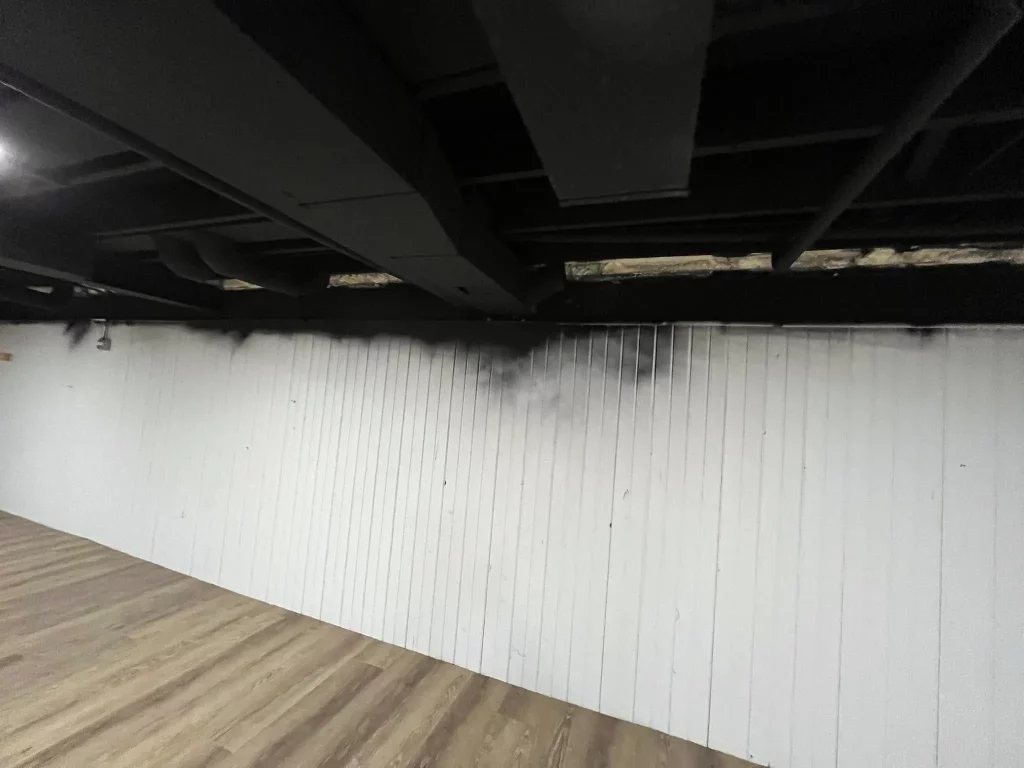
Chicago’s building code follows the International Energy Conservation Code with local amendments affecting commercial insulation requirements. The city mandates continuous insulation values ranging from R-7.5 to R-15 depending on building height and use classification. These requirements specifically address thermal bridging reduction, a critical factor in steel-framed commercial construction prevalent throughout the metropolitan area.
Building officials increasingly scrutinize vapor retarder placement and continuity, particularly in mixed-use developments where residential and commercial spaces share building envelopes. Professional installation documentation becomes essential for permit approval and final inspections.
Bonus Tip: Document all penetration sealing with thermal imaging during installation phases, as Chicago building inspectors now request thermal bridging verification reports for buildings over 75 feet in height.
Chicago’s climate creates challenging moisture conditions with winter dewpoint temperatures frequently below 0°F and summer humidity levels exceeding 70%. Commercial buildings generate substantial internal moisture loads through occupancy, food service operations, and industrial processes that require careful vapor drive analysis.
Interstitial condensation within wall assemblies becomes a critical concern when insulation systems lack proper vapor control. Spray foam insulation addresses this challenge through its combined insulation and air barrier properties, while rigid foam applications require careful detailing of vapor retarders and air sealing membranes.
The city’s freeze-thaw cycles create additional stress on building envelopes, making moisture infiltration pathways particularly problematic. Ice dam formation on commercial roofing systems often traces back to inadequate insulation continuity and air sealing performance.
Existing building conditions significantly influence insulation selection for commercial projects. Steel frame construction requires thermal bridging mitigation strategies that favor continuous insulation approaches. Concrete masonry unit walls present different thermal performance characteristics that may benefit from specific insulation placement strategies.
Fire rating requirements vary substantially between occupancy classifications. Educational facilities, healthcare buildings, and high-rise structures face more stringent fire performance standards that limit certain foam insulation applications without proper thermal barriers.
Mechanical system integration affects insulation performance and installation sequencing. Buildings with extensive ductwork, piping, and electrical systems require insulation materials that accommodate penetrations while maintaining thermal continuity.
Budget considerations extend beyond initial installation costs to include long-term energy performance and maintenance requirements. Life-cycle cost analysis becomes particularly important for commercial buildings with 20-30 year operational planning horizons.
South Chicago Insulation delivers comprehensive commercial insulation solutions tailored to Chicago’s demanding climate conditions:
Building owners frequently inquire about insulation performance during Chicago’s extreme weather events. Closed-cell spray foam maintains its insulating properties even when temperatures drop below -20°F, while traditional batt insulation can lose up to 50% of its thermal resistance under similar conditions due to convective air movement.
Retrofit projects often face space constraints that limit insulation thickness. Spray foam applications provide maximum R-value per inch, making them ideal for situations where wall cavity depth cannot be increased. This advantage becomes particularly valuable in historic commercial buildings where architectural features must be preserved.
Installation timing concerns arise frequently given Chicago’s limited construction season. Spray foam installation requires temperatures above 40°F, while rigid foam board systems can be installed in colder conditions with proper adhesive selection and application techniques.
Bonus Tip: Schedule spray foam installations during mild weather periods and use temporary heating when necessary, as proper curing temperatures directly affect long-term performance and code compliance.
Spray foam insulation provides optimal thermal performance and air sealing capabilities for Chicago’s commercial buildings, particularly in steel-framed construction where thermal bridging presents significant energy loss pathways. Rigid foam board insulation offers excellent moisture resistance and fire performance for specific applications including below-grade installations and exterior continuous insulation systems.
Commercial building owners should prioritize insulation systems that address Chicago’s extreme temperature ranges while providing long-term durability and code compliance. Professional installation becomes critical for achieving specified thermal performance and avoiding moisture-related building envelope problems.
Evaluate your building’s specific requirements including structural system, occupancy classification, and energy efficiency goals when selecting insulation materials. Consider both initial installation costs and long-term operational savings when making decisions that will affect building performance for decades.
Recently, South Chicago Insulation set a new quality benchmark for spray foam insulation services through expanded service standards and enhanced training initiatives designed for Chicago’s demanding commercial environments.
Commercial building insulation requires specialized knowledge of Chicago’s climate challenges, building codes, and performance requirements. South Chicago Insulation provides expert consultation and installation services that ensure optimal thermal performance and long-term building durability.
Contact South Chicago Insulation at [email protected] or (779) 803-8025 to discuss your commercial building insulation needs. Professional assessment of your building’s specific requirements helps identify the most effective insulation solutions for Chicago’s demanding climate conditions.
Chicago requires minimum R-7.5 continuous insulation for commercial buildings, though optimal performance typically ranges from R-15 to R-25 depending on building height and use. Higher R-values provide better energy efficiency but must be balanced against wall thickness constraints and structural considerations.
Spray foam excels in high-rise applications due to its air sealing properties that reduce stack effect pressures. Buildings over 75 feet experience significant pressure differentials that drive air leakage, making spray foam’s combined insulation and air barrier properties particularly valuable for maintaining building envelope performance.
Most commercial buildings can be retrofitted with improved insulation systems through interior or exterior applications. Interior retrofits often use spray foam in cavity spaces, while exterior retrofits typically employ continuous rigid insulation systems that address thermal bridging without reducing interior space.
Commercial insulation must comply with flame spread and smoke development ratings specific to building occupancy classifications. Spray foam typically requires thermal barriers in occupied spaces, while mineral wool provides inherent fire resistance. Building height and occupancy type determine specific requirements that affect material selection.
HVAC systems, electrical conduits, and plumbing create numerous penetrations that compromise insulation continuity. Spray foam applications can seal around these penetrations effectively, while rigid board systems require careful detailing and sealing to maintain thermal performance around mechanical system installations.

